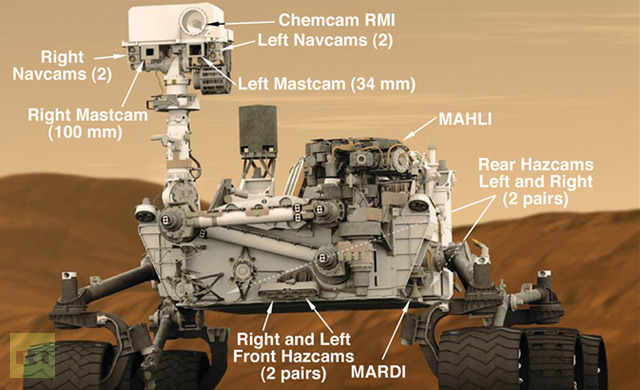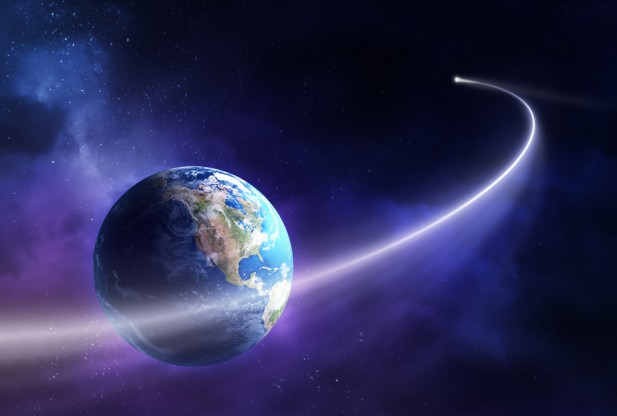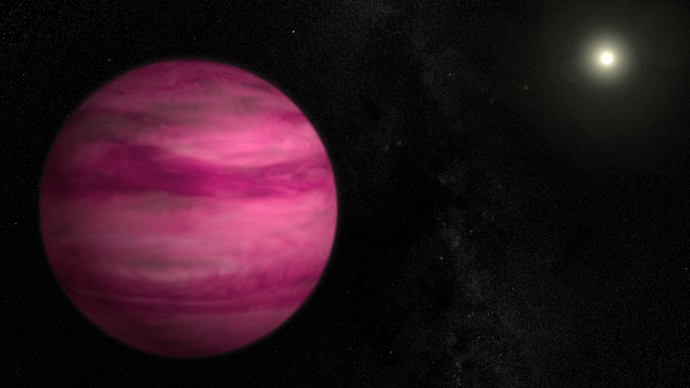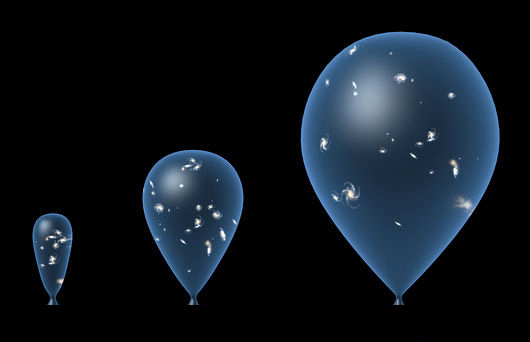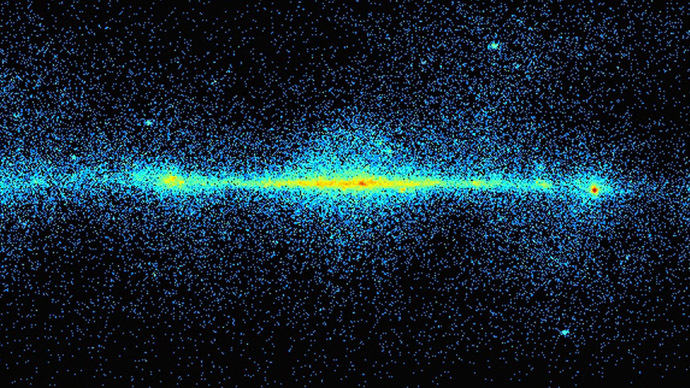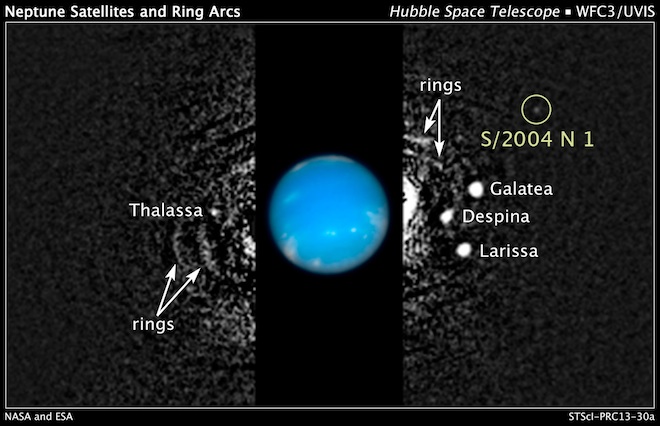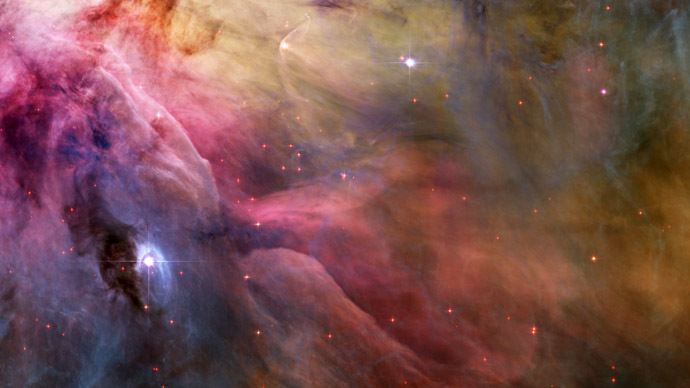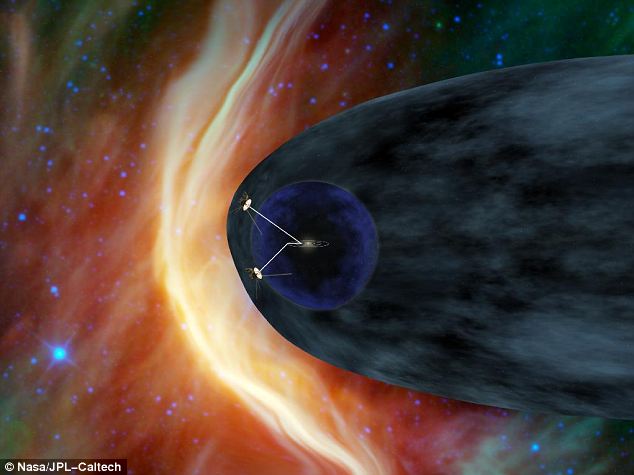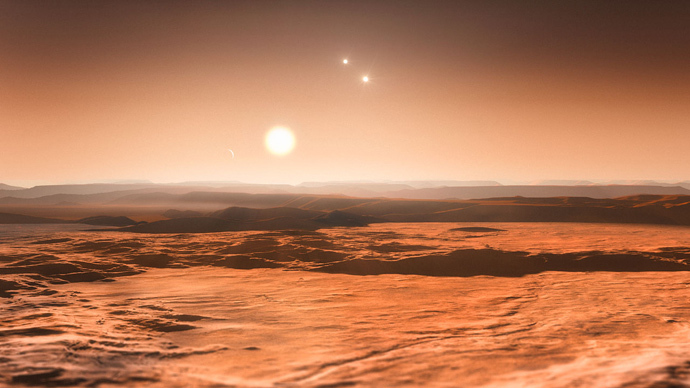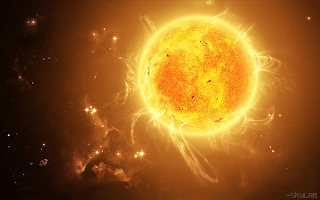Home » Astronomy
Italian researcher Matteo Ianneo discovers castle on Mars
Italian researcher Matteo Ianneo who previously discovered dozens of other interesting things on Mars, has now found something new and interesting again.
This time he found a castle on Mars which can be seen as confirmation on Google Earth, planet Mars, at the following coordinates: Latitude 84°13’27.72″N Longitude 22°32’19.53″W.
In a short interview, we asked Mr. Matteo...
Will NASA launch Mars probe on time?
With NASA staff sent home and the Curiosity rover dozing off on Mars, former astronaut Tom Jones tells RT how the US government shutdown will affect the space agency’s projects and deadlines.
The National Aeronautics and Space Administration’s 55th birthday celebrations on October 1 were marred as it [NASA] sustained one of the biggest blows of all the governmental agencies due to the stalemate...
NASA rover Curiosity finds water in Mars soil
The rover Curiosity has discovered water in fine-grained soil on the surface of Mars, NASA confirmed Thursday in a series of papers published in the journal Science.
Each cubic foot of Martian soil contains about two pints of liquid water, though the molecules are bound to other minerals in the soil.
Curiosity first landed on Mars in August 2012 on Gale Crater, near the equator of the planet. Its...
Experts Puzzled After Great Comet Makes Mars Orbital “Adjustments”
A new report prepared by the Federal Space Agency (ROSCOSMOS) circulating in the Kremlin today states that Comet C/2012 S1 has made a number of “unexplained orbital adjustments” around the planet Mars seemingly to better align itself with the Red planets strange moon Phobos.
According to this report, Comet C/2012 S1 was first discovered on 21 September 2012 by Russian amateur astronomers Vitali...
Iran to send second living creature into space soon
Iran launched its first indigenous satellite Omid (Hope) (shown) into space in 2009.
Deputy Head of Iran Space Agency (ISA) Hamid Fazeli says Iran plans to send second living creature into space in the near future.
Fazeli said Saturday that the living organism would be sent to space on board a liquid-fuel carrier within the next 45 days.
Iran managed to successfully send a living creature into space...
Asteroid Cruithne, quasi-satellite of Earth
Asteroid Cruithne with serial number 3753 has attracted a lot of attention of scientists recently. The asteroid moves around the sun in orbit similar to that of the Earth, and is located at a more or less same distance from the Earth throughout the year, which makes it a so-called quasi-satellite of our planet. What does it mean for us?
Cruithne’s diameter is five kilometers, and its weight...
NASA shows smallest-yet imaged exoplanet
Glowing a dark magenta, the newly discovered exoplanet GJ 504b weighs in with about four times Jupiter’s mass, making it the lowest-mass planet ever directly imaged around a star like the sun.
Meet GJ 504b, a cute-looking Jupiter-sized planet, currently the lowest-mass celestial body outside of solar system, which astronomers managed to image directly.
Glowing a dark magenta, the newly discovered...
German physicist stops Universe
German physicist Christof Wetterich proposed an interesting model of the universe, which, in contrast to the standard view, is not expanding. According to his concept, modern space is quite stationary, or even already started to slowly shrink. The scientist managed to bypass numerous slippery questions of the Big Bang Theory.
The idea that the universe is expanding is quite young, and emerged less...
Full moon may disturb good night's sleep
New analysis conducted by the Swiss scientists has uncovered that moonlight can affect good sleep patterns on nights around the full moon.
The study that was carried out by researchers from the University of Basel and other research centers, suggest that lunar influence is behind sleep disruption during the full moon nights.
To examine the data, researchers studied 33 volunteers sleeping in tightly...
World's largest gamma telescope to study cosmic rays from Siberia
NASA image from 21 March, 2000 shows a “direct” picture of the first four years of Compton Gamma-Ray Observatory spacecraft’s Energetic Gamma-Ray Experiment Telescope(EGRET) data.
A desolate site in Siberia will soon become the forefront of international research into the secrets of the Universe, after the world’s biggest gamma ray detection array scientists are creating there comes...
US scientist discovers another moon of Neptune
Thanks to archival photographs taken with the help of Hubble telescope, scientists found out that Neptune had 14, not 13 satellites, as was previously believed.
The new satellite was discovered by American scientist Mark Showalter of SETI non-profit research institute network that is engaged in the search for extraterrestrial life. The specialist studied more than 150 images taken by the telescope...
New Evidence proves existence of Space Wind
Scientists have revealed new evidence of space wind, confirming a theory proposed 20 years ago. ‘Plasmaspheric wind’ is an elusive phenomenon and its existence helps scientists understand how the atmosphere protects us from violent solar winds.
Proof of space wind was uncovered in a study in European Geosciences Union journal Annales Geophysicae. The so-called ‘plasmaspheric wind’ is actually...
Nasa's Voyager 1 on the verge of entering Interstellar Space
Entering the unknown: This artist’s impression shows how plasma flows around NASA’s Voyager 1 spacecraft as it gets close to entering interstellar space
Nasa’s Voyager 1 is on the verge of becoming the first human-made object to enter interstellar space, scientists say.
First launched in 1977, the unmanned spacecraft has been in uncharted territory since last year.
Scientists had...
Three super-Earths discovered in habitable zone of same star ‘for the first time’
Astronomers have found a record number of super-Earths orbiting in the habitable zone of a known star, 22 light years away from Earth. The planets, which have three suns, have one side illuminated at all times while the other is submerged in darkness.
The Gliese 667C star in the constellation of Scorpion has been well studied before. However, as a result of new observations the scientists made a stunning...
Newly discovered star throws light on evolution of Sun
Brazilian astronomers made a sensational discovery. On the far side of the galaxy they found a star with characteristics resembling those of the Sun. This star is located 240 light-years away from the Earth. Interestingly, the observed star is two million years older than the Sun, and its observation will help scientists to study the evolution of the Sun.
The study was conducted using a space satellite...

